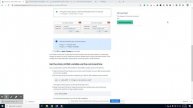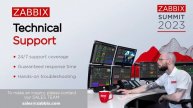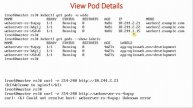Kubernetes Controllers/Operators 101 |Kubernetes Kerala Meetup| November 2022 | by Umanga
#kubernetes #kubernetesfullcourse #meetup
#kubernetes #kubernetesfullcourse #meetup #kerala #homelab #cncf #cloudnative #operators #controllersettings
Kubernetes Controllers and Operators are essential components of Kubernetes that automate and manage the state of applications and resources running within a cluster. They play a crucial role in maintaining the desired state of your workloads, ensuring high availability, scalability, and reliability. Let's break down what they are and how they work:
1. Kubernetes Controllers:
Kubernetes Controllers are built-in control loops that regulate the state of various resources in a Kubernetes cluster. They continuously monitor the cluster's state and make necessary changes to bring the actual state in line with the desired state. Here are some common types of controllers:
ReplicaSet Controller: Manages the desired number of replica Pods for a particular workload, ensuring that if a Pod fails or needs to scale, new Pods are created or terminated accordingly.
Deployment Controller: Builds upon ReplicaSets and manages the deployment of applications, making it easy to update, roll back, and scale deployments.
StatefulSet Controller: Ensures the stable network identifiers and persistent storage for stateful applications, like databases, by maintaining a predictable naming convention and scaling strategy.
DaemonSet Controller: Ensures that a specific set of Pods runs on every node in the cluster, typically used for system-level agents and services like logging or monitoring.
Job and CronJob Controllers: Manages batch workloads and scheduled tasks by creating and managing Pods that run to completion or according to a schedule.
2. Kubernetes Operators:
Kubernetes Operators are custom controllers that extend the functionality of Kubernetes by automating the management of complex applications and services. They are typically used for stateful applications, databases, and other software that requires more than just basic deployment and scaling. Here's how Operators work:
Custom Resource Definitions (CRDs): Operators introduce custom resource definitions (CRDs) that define custom resources specific to an application or service. These CRDs allow you to declaratively specify how the application should be configured and managed within Kubernetes.
Custom Controllers: Operators include custom controllers that watch for changes to the CRDs and react accordingly. When you create, update, or delete a custom resource, the Operator controller takes action to ensure the application matches the desired state.
Automated Management: Operators automate tasks like provisioning, configuration, scaling, backup, and recovery for complex applications. They apply domain-specific knowledge to manage these applications efficiently.
Example: For instance, the etcd Operator automates the deployment and management of etcd clusters, a distributed key-value store used as a data store by Kubernetes itself. It handles tasks such as scaling etcd clusters, taking backups, and performing upgrades seamlessly.
In summary, Kubernetes Controllers and Operators are fundamental to the self-healing and declarative nature of Kubernetes. Controllers handle basic resource management, while Operators extend Kubernetes to manage complex applications with their custom logic. Both Controllers and Operators contribute to the resilience and ease of managing applications within Kubernetes clusters.
Видео Kubernetes Controllers/Operators 101 |Kubernetes Kerala Meetup| November 2022 | by Umanga автора Матрица Кода
Видео Kubernetes Controllers/Operators 101 |Kubernetes Kerala Meetup| November 2022 | by Umanga автора Матрица Кода
Информация
4 декабря 2023 г. 0:05:25
00:55:49
Похожие видео






















